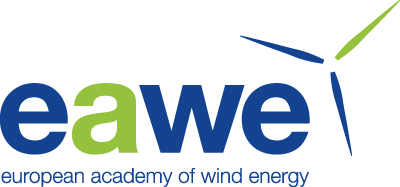the Creative Commons Attribution 4.0 License.
the Creative Commons Attribution 4.0 License.
Fully Coupled High-Resolution Atmosphere-Ocean-Wave Simulations of Hurricane Henri (2021): Implications for Offshore Load Assessments
Abstract. This study presents a fully coupled modelling system that integrates atmospheric, ocean, and wave models to simulate interactions during tropical cyclones and assess their implications for offshore infrastructure. The system is evaluated using Hurricane Henri (2021), chosen for its distinctive track along the U.S. northeast coast, an area with densely populated regions and offshore wind energy zones. The event is supported by extensive observations, including airborne Doppler radar, dropsondes, sea surface temperature, and ocean surface wave measurements. Three experiments with increasing complexity in atmosphere-ocean-wave coupled processes are conducted to examine their impact on storm intensity and development. Compared to atmospheric-only and atmosphere-ocean coupled simulations, the fully coupled model reduces intensity overestimations and improves the wind structure from near the surface to the upper troposphere. These improvements are due to realistic representation of complex feedback loops between the atmosphere, ocean, and waves. Wave-induced cooling of sea surface temperatures and reduced surface enthalpy flux mitigate intensity overestimation. Additionally, wave-driven surface roughness, reflected in realistic surface roughness length and drag coefficients, enhances the radial and vertical profiles of hurricane boundary layer winds. The fully coupled simulation shows promising potential for assessing risks to offshore infrastructure, featuring a more stable atmospheric boundary layer, weaker surface roughness, and lower turbulent kinetic energy. These factors allow wind veer to persist and align more closely with observations. The system also captures wind-wave misalignment, emphasizing the importance of incorporating ocean and wave components for accurate risk assessments in offshore infrastructure, such as wind turbine operations.
- Preprint
(3928 KB) - Metadata XML
- BibTeX
- EndNote
Status: final response (author comments only)
-
RC1: 'Comment on wes-2025-47', Anonymous Referee #1, 08 Apr 2025
-
AC1: 'Reply on RC1', Chunyong Jung, 23 Jul 2025
The comment was uploaded in the form of a supplement: https://wes.copernicus.org/preprints/wes-2025-47/wes-2025-47-AC1-supplement.pdf
-
AC1: 'Reply on RC1', Chunyong Jung, 23 Jul 2025
-
RC2: 'Comment on wes-2025-47', Anonymous Referee #2, 15 Jun 2025
Review of ”Fully Coupled High-Resolution Atmosphere-Ocean-Wave Simulations of Hurricane Henri (2021): Implications for Offshore Load Assessments”
This study investigates the effects of using different combinations of COAWST modeling components on the simulated Hurricane structure: Atmosphere only, Atmosphere-Ocean, and Atmosphere-Ocean-Wave. Various measurements are used to validate the results, and help to interpret the mechanisms of the interactions between atmosphere, wave and ocean. It also discusses the relevance to the calculation of loads for offshore wind turbines
The paper is well written, with clear research questions, reasonable methodology, convincing presentation of results and analysis. I recommend the paper Minor Revision, with the following comments and suggestions.
- Sec 2.1, line 132: it is written that “we have modified the WRF code to enable…”. How does this work with the SWAN model? Isn’t the Taylor-Yelland roughness length algorithms included in SWAN?
- Sec 3.1, line 198: “a resolution of 4 km or less is adequately convection-permitting in WRF for simulating extreme events” – what do you mean “adequate”?
- The paragraph starting from line 200 seems to be about the ocean modeling. Yet the last sentence seems to belong to the atmospheric modeling, or does it?
- Fig 3: many figures, including this one, miss x and y-axes labels. Please add all of them.
- Fig 3: What is the temporal resolution of the Best Track data in Fig 3b? What are the heights of winds from the modeling in Fig 3c?
- Fig 4: Did the authors explain why the two time are chosen for the analysis? What about other time? Please add Unit to the color bars – not only to this figure but to all figures.
- Fig 7: The profiles in this figure, is it an average over a certain period or is it a snapshot on the day?
- Fig 10a: add legend. Fig 10e and f: do you think the difference between wind and wave directions is caused by swell? What is the model’s ability in capturing swell?
- Please make sure all figures have axes labels, legends and color bars with units.
Citation: https://doi.org/10.5194/wes-2025-47-RC2 -
AC2: 'Reply on RC2', Chunyong Jung, 23 Jul 2025
The comment was uploaded in the form of a supplement: https://wes.copernicus.org/preprints/wes-2025-47/wes-2025-47-AC2-supplement.pdf
Viewed
| HTML | XML | Total | BibTeX | EndNote | |
|---|---|---|---|---|---|
| 754 | 165 | 30 | 949 | 47 | 74 |
- HTML: 754
- PDF: 165
- XML: 30
- Total: 949
- BibTeX: 47
- EndNote: 74
Viewed (geographical distribution)
| Country | # | Views | % |
|---|
| Total: | 0 |
| HTML: | 0 |
| PDF: | 0 |
| XML: | 0 |
- 1





Attached.